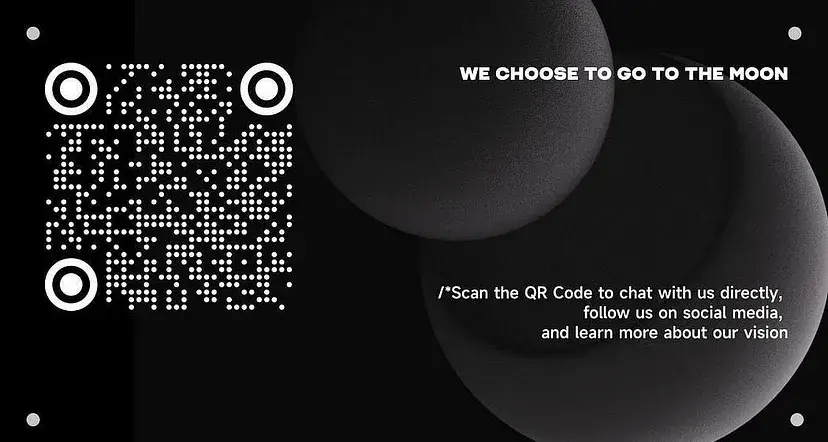Moonshot Mafia #23 | Exploring Fully On-Chain Games, Insights from SevenX Nitro Hackathon AMA 2023
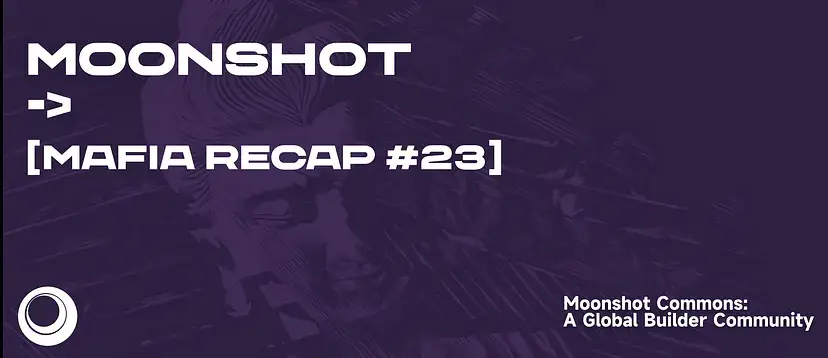
At the SevenX Ventures Nitro Hackathon AMA, SevenX Ventures invited a distinguished panel of speakers, including Damian, Founder of CheDAO; Tianran, Head of Ecosystem at Mask Network; Bowen, Partner at Smrti Lab; and Aiko, Gamification Alchemist at Folius Ventures. Gua, Co-founder of Moonshot Commons, a subsidiary of HackQuest, moderated the Nitro Hackathon AMA held on Twitter Space. The objective of this event was to gather the leading voices in GameFi and discuss continuous development and future potential of fully on-chain games.
It’s worth noting that Moonshot Commons hosted this particular AMA session via Twitter Space. This article has been curated based on the original Twitter Space post containing the entire discussion. We invite you to follow our official Twitter @buildmoonshot to access the event recording and engage in further interactions with our team.
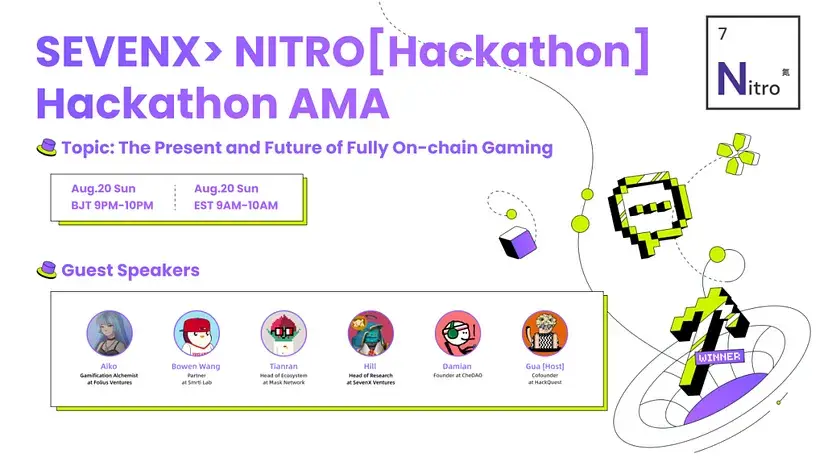
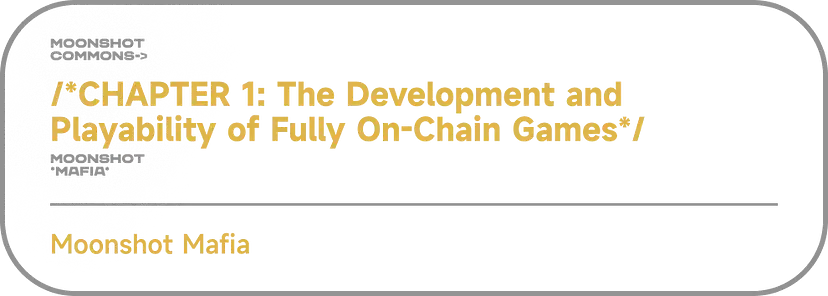
What are your thoughts on the inception and evolution of fully on-chain games?
Last year, Jason (my team lead) and I dedicated approximately three months to crafting a technical stack design for a fully on-chain game, encompassing every facet of gameplay. In the end. However, we realized that the game could probably attract no more than 6,000 players at best, and it didn’t align with our investment strategies. Although my position didn’t get involved deeply into the investment side of our team, I can offer an observer’s perspective on the state of fully on-chain game development.
In my view, the evolution of fully on-chain games can be broken down into five distinct stages, each marked by a gradual expansion of its target users.
The initial stage revolves around Dark Forest’s player guild, a globally certified entity by Dark Forest, boasting around four guilds. In China, Guild W guild emerged, comprising a niche group of individuals who initially harbored an interest in fully on-chain games.
Last year, I observed a few notable trends. For instance, Layer2 solutions like Starknet attracted creative innovators such as guiltygyoza, the founder of the Topology project, who began discussing the potential of fully on-chain games. Due to the high demand for developers in the Cairo ecosystem and Layer2 at the time, and with the enthusiastic support of fully on-chain game founders, the concept of fully on-chain gaming gained broader recognition. It appears that these visionaries collectively contributed to its growth and prominence.
The third wave includes the holders of the Loot community who are now focusing on different facets of the growing Loot ecosystem, driven by the continued success of the Loot project.
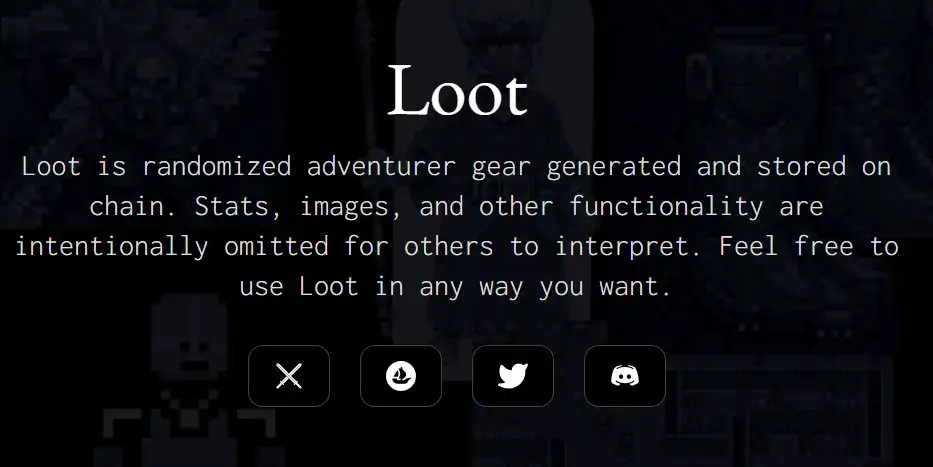
Following that, the fourth wave features institutional researchers, including myself, Bowen, Tianran, and others, who initially ventured into fully on-chain games. Their involvement has extended into a broader institutional landscape, with these researchers actively publishing articles and participating in discussions centered on fully on-chain games.
Finally, the fifth wave encompasses enthusiasts who have an affinity for strategic gaming or on-chain gambling. Upon encountering the concept of fully on-chain games, they often draw parallels to familiar games like the classic “Wolf and Sheep” game. Since the latter part of the year 2021, we’ve witnessed the emergence of fully on-chain gambling game platforms that have collected substantial interest from gaming enthusiasts.
Aiko mentioned that after completing the game design, the team conducted potential user volume forecasting, estimating only around 6,000 users. Aiko’s user volume forecasting result has raised my question: What factors contribute to the success of fully on-chain games?
Let’s take Dark Forest as an example. It launched in 2020 during the DeFi Summer with just about 300 players. The game, however, was quite challenging and could often be frustrating for users. Compared to mainstream games like Candy Crush, Doodle Jump, Honor of Kings, or Battlegrounds, Dark Forest falls short in terms of playability. Addressing this challenge will probably require developers and teams to possess a profound understanding of social dynamics.
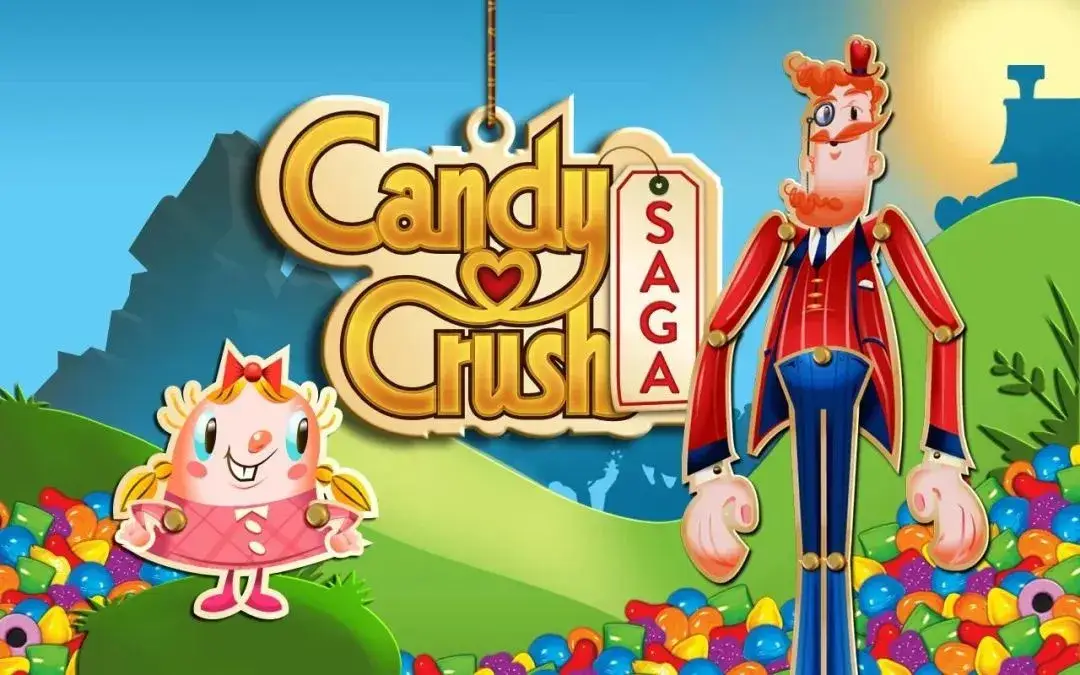
From 2017 to the present, including the eras of US DICE, Wink, early attempts of Zilliqa, and even Cryptokitties’ endeavors to integrate NFT cats into racing cars, there have been at least three to four hundred teams experimenting in this field. A prominent concern has been the elevated costs associated with on-chain gaming, where each transaction carries a gas fee. This leads to a less-than-ideal user experience, especially for newcomers, and has largely been endured by loyal members of the community.
Creating an on-chain game that’s genuinely fun, less frustrating, and fosters teamwork is quite challenging. This is particularly evident when you consider that historically, on-chain games have tended to be relatively simple, with Satoshi Dice serving as a prime example.

As of now, fully on-chain gaming resembles the early days of DeFi back in 2016 and 2017. It’s a phase where the infrastructure is still under development, ERC20 Stablecoins are absent, initial DEX offerings are yet to emerge, and the 20–80 pool distribution model is yet to take shape. Unfortunately, this phase has gone relatively unnoticed by game developers, and those in the crypto space have limited familiarity with the gaming sector. Serena on our team has created a release calendar for numerous on-chain games. Most projects, including one led by Yisi Liu, CTO of Mask Network, won’t be available until year-end or early next year. Currently, everyone is in the early stages of laying the groundwork for what’s to come.
To truly captivate users, I believe there are three essential design factors to consider:

In terms of timeline comparisons, I find that 2023 bears a striking resemblance to the state of DeFi in 2019. I recall that in the summer of 2019, Compound’s “C Loan” was introduced. The mechanism involved depositing funds into Compound, which yielded a 3% annualized return for example, and receiving a token with a matching 3% annualized yield. These “C tokens” generated returns and could combine with other items for various application scenarios. Developers quickly realized how versatile these loans were, leading them to create loans labeled from “a” to “f.” With such a proliferating trend, these developers might find themselves needing more than just the 26 letters of the alphabet to name these loans! The surge in developer interest in fully on-chain games over the past few months carries a similar vibe of that time.
Regarding specific milestones, V1 of the model was created in October 2022, followed by an interview between Optimism and Minecraft. The first MUD game then emerged, inviting participants to become MUD residents, and a series of hackathons took place. One of these events in May was particularly impressive, with 109 fully on-chain gaming projects. During this period, I was overseeing the operations of a fully on-chain gaming group, and the discussions within our community were incredibly active. I’m delighted to note that 8 out of the 109 fully on-chain gaming projects were crafted by members of our group. In May, I also attended a fully on-chain gaming summit in Portugal. Although the conference had only 50 attendees, it brought together influential founders from various segments of the industry.
However, we should not draw an absolute equivalence between the emergence of fully on-chain gaming and DeFi. DeFi and CeFi are fundamentally different. With CeFi, individuals often rely on token symbols and entrust their assets to platforms like CoinSafe or OKX. However, in DeFi, transparency is key, and the exchange cannot manipulate the numbers. In the case of Gamefi, in its initial years, people found the gameplay intriguing and hot. However, it became clear that only items like NFTs are on the blockchain, while the specific components of the gaming logic are still housed within the respective game servers. This falls short of full integration.
As we entered a bear market, questions arose about the robustness of GameFi. On one hand, MUD embarked on the task of abstracting a comprehensive fully on-chain gaming framework with the introduction of Dark Forest. They began this work in the first half of 2022 and unveiled the initial version in the latter half.
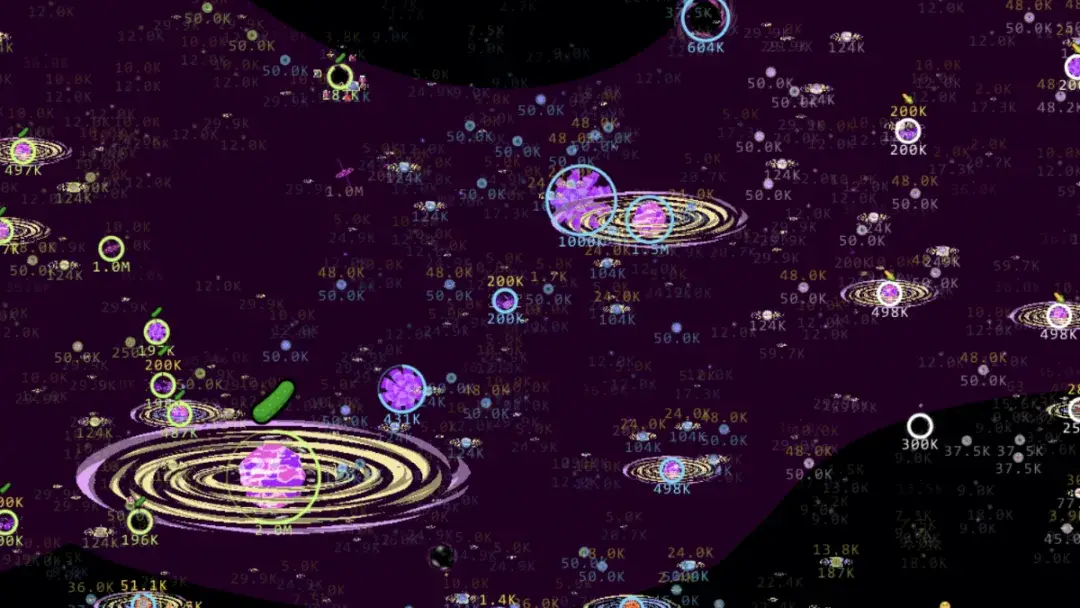
On the other hand, Loot attempted to manually craft a fully on-chain game, but they soon realized that this was a hard task to take. Later, Loot noticed that the framework developed by MUD appeared to be quite promising. Therefore, by the end of 2022, Loot decided to fork this framework, and now it’s almost ready for use. They are now calling on various individuals to start developing it.
Regarding attributes, the shift from DeFi to CeFi was marked by key characteristics like openness, composability, and interoperability. I see a parallel in GameFi’s transition to fully on-chain gaming, with these same attributes taking center stage. This comparison resonates with me and my fellow developers and gives us hope that this concept can thrive. In 2019, DeFi’s introduction of yield farming triggered a market frenzy, resulting in a growth of Compound and Uniswap clones, culminating in a dramatic and tumultuous DeFi summer.
I believe fully on-chain games are currently experiencing a similar phase where developers are brimming with excitement. However, 2C (to-customers) users primarily consist of venture capital firms and product managers dipping their toes in the water. The lingering question is whether the playability of fully on-chain games has reached a point where mainstream adoption is possible. It seems like it’s not at this point yet, I think we’re still on the verge of a potential breakthrough.
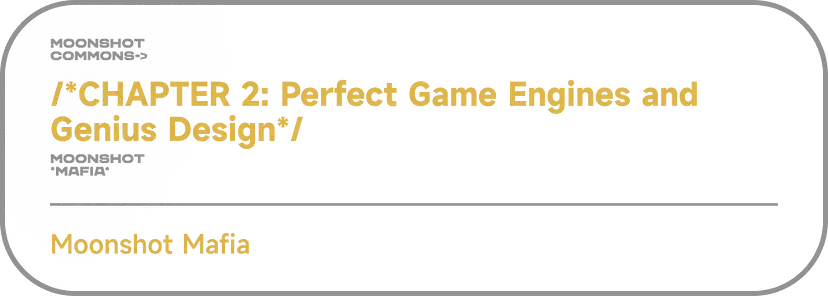
So, at this current stage, will dedicated game developers opt for fully on-chain games?
Honesty, game developers tend to be highly practical. Take some developers in China, for instance; they enthusiastically pursue avenues like TikTok if it promises profitability. Over the past decade or so, there have been many successful projects going global from China, which also demonstrates how much importance everyone places on this market.
I agree with Bowen’s point that the current market landscape is not persuasive enough. The current business models in the market lack innovation, and while some value-driven developers have exclusive resources and commendable goals, the overall business environment isn’t sufficiently attractive. During this bear market, we must focus on the economic aspects of our products. This will set the stage for more developers to succeed when the bull market returns. As one developer starts profiting, it will naturally draw more developers into the ecosystem. These games, together, will lead to innovative approaches to fully on-chain games.

Source: Moonshot Commons
The truth is, that many Web2 game developers are still stuck in conventional game design paradigms, which may appear ineffective. Competing with industry giants such as Lilith, Hypergryph, or miHoYo is undeniably challenging. In the end, the success and appeal of a project often boil down to its profitability.
During a dinner with Lilith CEO Xinwen Wang in Singapore last November, he presented an intriguing perspective: if a project couldn’t foresee generating 10 billion RMB in annual revenue, it wouldn’t be worthy of investment. He even shared an experience of attempting to create an Ethereum-based game with a small team of around 15 people, ultimately abandoning the project once he realized its incompetency to monetize.
Prominent industry leaders like Tencent, NetEase, and Perfect World have started blockchain-related initiatives, both through investments and internal incubation. Nonetheless, these initiatives frequently faced obstacles stemming from the uncertainty of the project outlook. At the core of this uncertainty is the absence of a sustainable and dependable revenue model that extends beyond the initial value of the investment token.
Which game genres do you believe are well-suited for fully on-chain games?
I’m confident that there’s a diverse range of games that can thrive on the blockchain. Let me draw from my own experience in 2018 when I played an NFT game about country naming. In this game, each country was treated as an NFT, and players could bid against each other to change the name of a country. This concept closely mirrors the gameplay of popular games like Parking War or Happy Farm during the RenRen and Facebook web game eras.
This model aligns perfectly with our current era, where it can operate efficiently on the blockchain at 24-hour intervals. It not only caters to the demands of Layer 2 and Layer 1 but also attracts on-chain users, or as we refer to them, real data-active users. Furthermore, it promotes gaming sustainability by encouraging daily engagement, where players return to play, collect, and participate in crafting activities.
Hence, I firmly believe that social games such as Parking War, and even Friends For Sale, are exceptionally good matches for this blockchain-based approach. Expanding on this idea, it could potentially encompass games like Snake, known for their endless gameplay. We are currently in a phase full of low-cost investments, extensive trial and error practices, and continuous refinements.
In a recent SubStack article, I shared my preferences for a fully on-chain game. To start, I’d steer clear of casual games like Facebook’s H5 games or WeChat’s Mini Program ecosystem. These games often rely on strong social networks, which might not align with the current user base in the blockchain space.
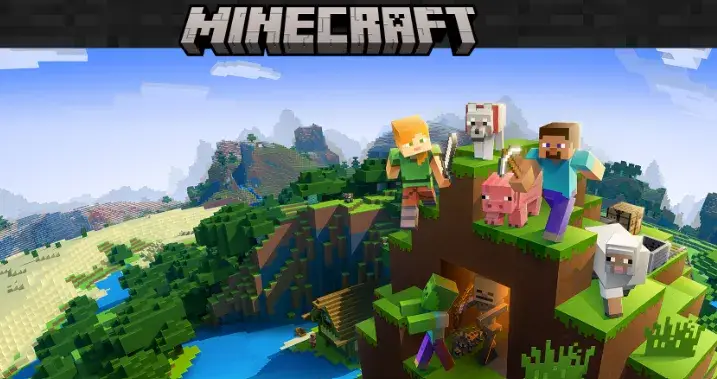
Sandbox games like Minecraft may not be the best candidates for fully on-chain integration, primarily because their core appeal hinges on the freedom to build and destroy without the burden of cost constraints. Incurring costs and resource limitations on the blockchain could potentially dilute the margin of utility of sandbox gaming.
Additionally, simulators like Dwarf Fortress, with their intricate worlds, pose challenges for blockchain adaptation. They demand significant GPU and CPU computing power, and it’s questionable whether the performance of Ethereum or other Layer 2 solutions can match that of Nvidia.
In that context, there’s an intriguing game on Steam known as “Screeps: World.” It falls under the category of programming games, and I saw great potential in aligning its logic with blockchain technology. What caught my attention was its utilization of timestamps: within the game, each realm and dimension operates with finite resources. The act of migrating between these realms often leads to epic stories, driven by resource thresholds. Players also engage in captivating narratives involving hindrances to each other’s migrations. I consider this game an excellent candidate for fully on-chain integration, given its programming-oriented gameplay.

In addition to my thoughts, I’m thrilled to see game development teams separating into two compelling concepts: the time engine and the logic engine, sometimes referred to as the social contract engine.
The time engine, which capitalizes on blockchain’s timestamp capabilities, ensures events unfold in chronological order. As an example, I remember a team that crafted a 5D chess game, distinguishing itself from traditional chess by enabling players to revisit previous timestamps and alter the positions of pieces they had previously moved. I believe the time engine holds substantial promise within the realm of fully on-chain games. To draw a comparison, its potential mirrors the impact of Zelda’s formidable physics engine, especially in the context of an open-world environment.
Concurrently, the notion of a social contract or logic engine is gaining ground. Teams like Curio are actively advancing this concept, and I’ve also heard of two teams in China exploring logic engines. The goal is to consolidate diverse rules and contract permissions into a unified system, effectively constructing an engine. I find this development exceptionally intriguing. These are facets that, in my view, possess strong potential for practical implementation in the fully on-chain gaming landscape.
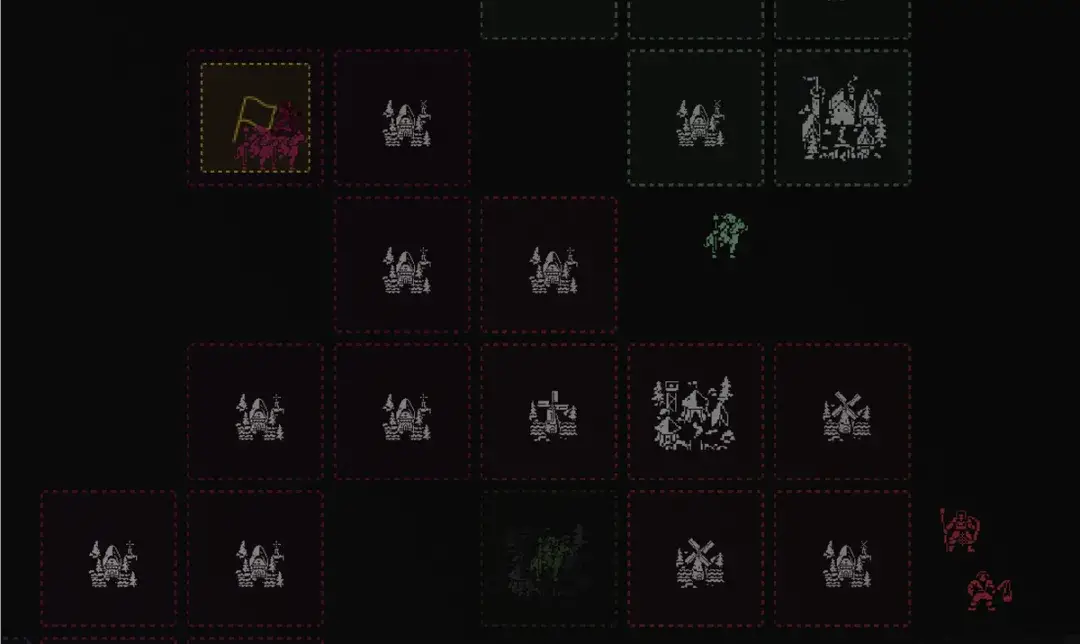
In the previous discussions within our team, we’ve explored various games from the Web1 and Web2 eras for inspiration. However, our focus has now shifted towards the challenge of determining which game genres are a natural fit for the fully on-chain gaming ecosystem. It’s become a bit of a puzzle. When Angry Birds burst onto the scene, it was created by a small Finnish team taking their first steps into game development. Similarly, think about Candy Crush, which was developed by King, a Swedish company that had previously concentrated on building online dating sites. Crafting thrilling games for the fully on-chain gaming universe truly calls for some game design genius.
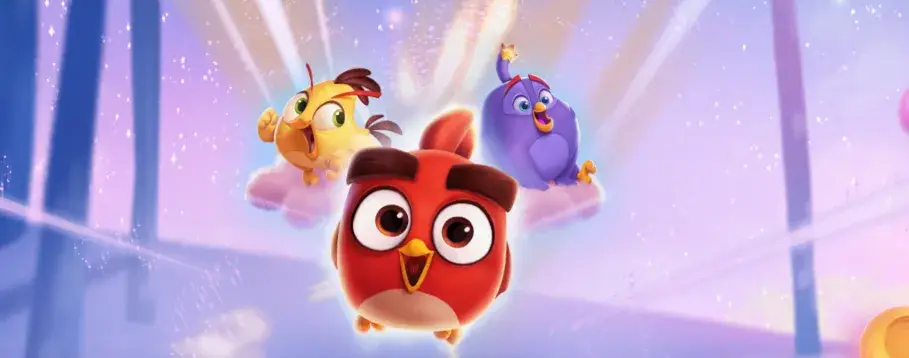
Back in the early days, the iPhone’s triumph, along with the rise of Android, drove the widespread adoption of Unity as a game development platform. But now, when we evaluate the infrastructure behind fully on-chain games, it seems a bit lacking. Even if a brilliant game designer comes up with a fantastic idea today, turning it into fully on-chain games can be a tough nut to crack. The primary challenge here lies in the absence of comprehensive tools or tech platforms that could streamline the game development process for designers. In contrast, with various low-code and no-code solutions, token issuance is way more accessible compared to developing fully on-chain games.
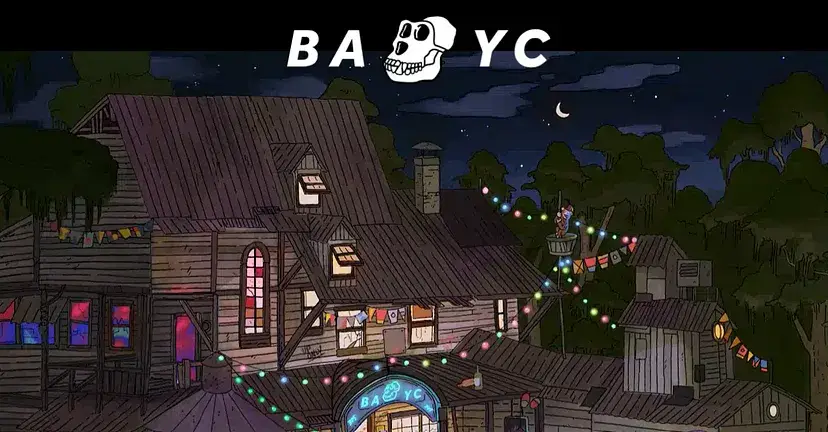
This is where the Loot ecosystem stands out. Loot features a vibrant community, innovative game concepts, and captivating intellectual property that entices developers to get involved. I’m eagerly anticipating the potential for a game-changing moment in the realm of fully on-chain games, similar to the rise of the Bored Ape Yacht Club. Maybe, shortly, the infrastructure supporting fully on-chain games will undergo a significant transformation, just like the evolution of game engines in the 1990s. This combination of factors could attract more experienced designers, breathing life into ideas that currently seem beyond imagination.
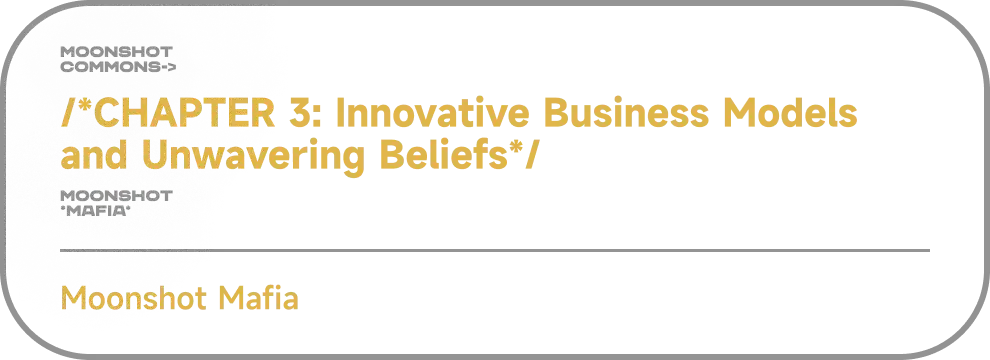
How can we attract funding to develop the infrastructure? Are the current fully on-chain gaming developers profiting?
I think it’s essential for us to figure out how to get that revenue stream in our industry today. We could start to see more exciting games popping up only when our infrastructure is solid. Right now, in the world of fully on-chain games, we lack a sufficient number of game developers, profit-generating opportunities, and engaging content. So, what we should focus on is getting more people to make money and attract more developers. When we have more developers, we’ll naturally have more games, and that’s when more investment will start flowing in.
While many discussions about fully on-chain games revolve around incorporating game logic into the blockchain, I believe there’s even greater potential in finding innovative ways to fully integrate the entire business model into this technology. This is a great opportunity, and this is something we shouldn’t miss out on.
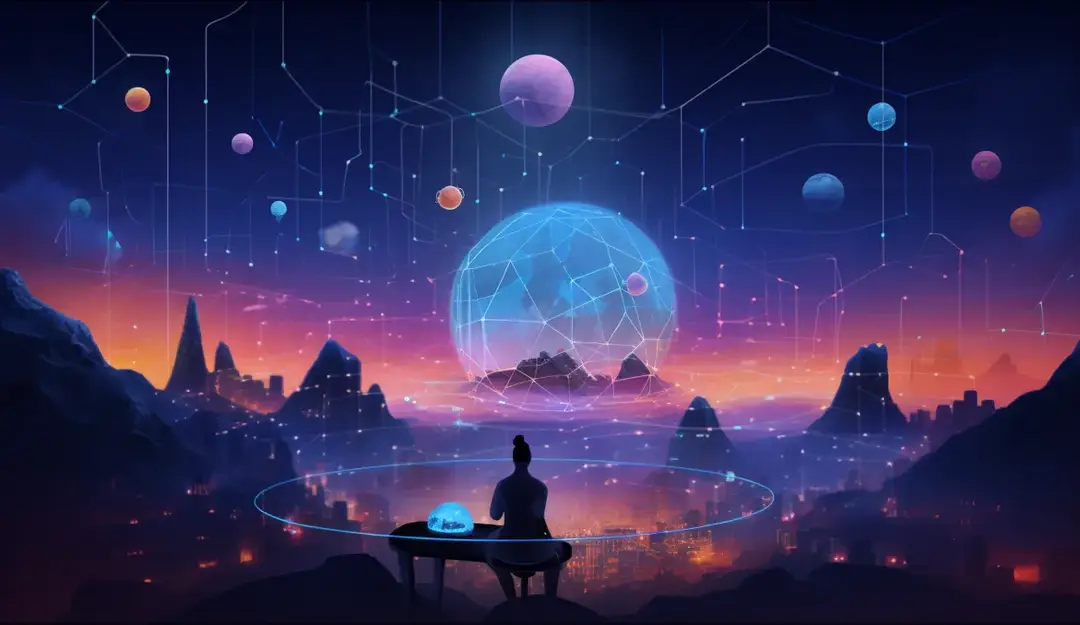
Making substantial profits in a challenging environment is not easy. There’s a half-joking sentiment that the Ethereum community is quite “naive” in being super value-driven. They seem to prioritize technology and decentralization over centralized profit-making endeavors, but this is genuinely a powerful belief.
Looking at it from the perspective of an ecosystem, many individuals held a strong focus on technology and crafted high-quality games without spending substantial expenses.
Although these young developers had the potential to issue tokens and potentially amass hundreds of millions or even billions of dollars, they still pursued a value-driven route instead of immediate monetization. The team then evolved into projects like MUD and 0xPARC, predominantly relying on donations and funds from the Ethereum Foundation.
A similar narrative unfolds in the Loot ecosystem, which commenced as a vibrant yet underfunded community. Despite encountering financial constraints, it tenaciously persisted and expanded into other meaningful projects.
I truly believe that cost-cutting alone is not the sole path to achieving remarkable outputs. What truly sets the successful teams apart is their unwavering dedication to technology and their values. I am confident that their immense potential and value will become increasingly evident as time goes on. Putting financing on top of everything could potentially lead the developers away from the fundamental mission.
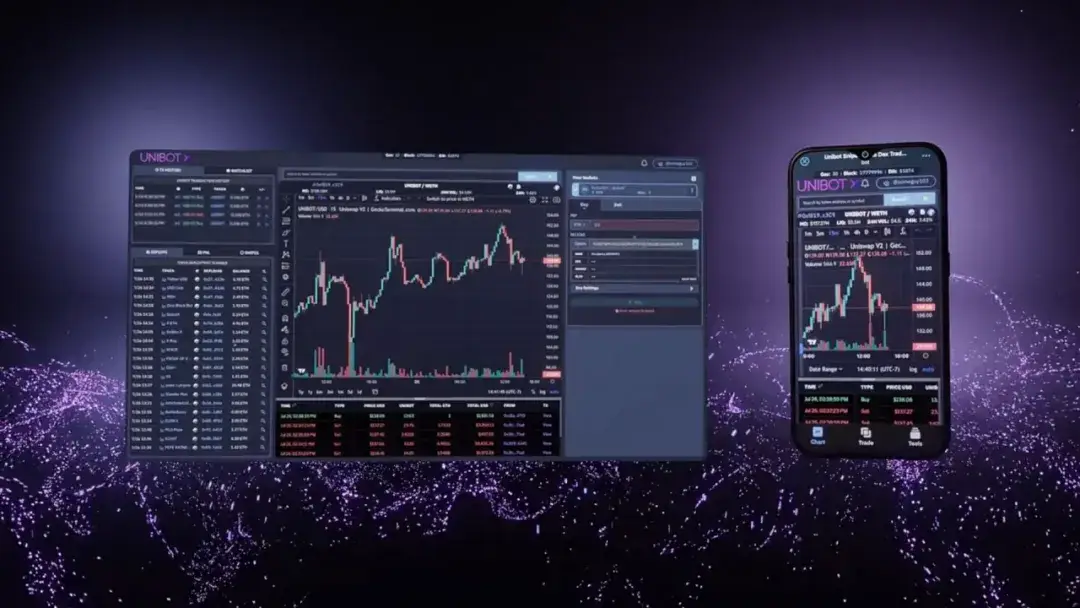
We can keep an eye on Telegram’s Unibot, and there’s no need to rush. In this ecosystem, although developers may not have raked in substantial profits yet, there are already individuals earning money, primarily driven by increased traffic. Many developers are brimming with innovative ideas that resonate with investors, creating a favorable financial environment.

Take, for example, the founder of MatchboxDAO, who excels in business acumen. MatchboxDAO opts to outsource the development of fully on-chain games, positioning themselves more as organizers of esports tournaments. This strategy allows them to generate revenue throughout the process. A blend of business savvy and an open-minded approach is crucial in this landscape.
